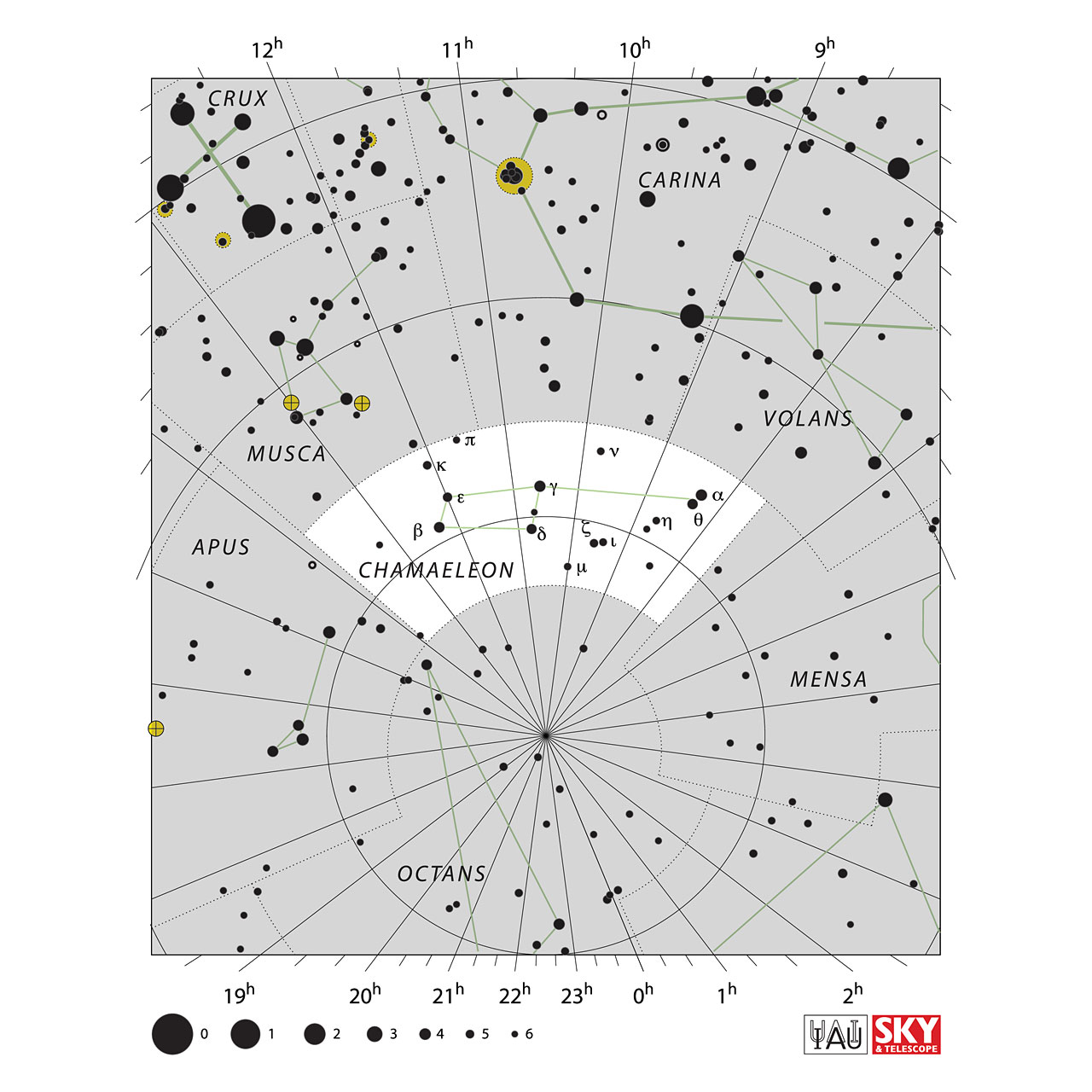Chamaeleon


Chamaeleon is the tenth smallest constellation. It lies close to the south celestial pole, where it appears highest in the evening sky in the months around February.
It was among a dozen constellations introduced by Pieter Dirkszoon Keyser and Frederick de Houtman which celebrate rare or exotic animals, and first appeared on star maps in 1598.
Chamaeleon does not contain any bright stars or deep sky objects; the lizard’s body is represented by a grouping of fourth-magnitude stars. It contains one Caldwell object, the planetary nebula C109 (NGC 3195).
In the Indian system this constellation is called ಚಂಚಲ ವರ್ಣಿಕಾ (Chanchala Varika)
Chamaeleon contains:
-
Stars
- α-Cha (mag 4.1)
- γ-Cha (mag 4.1)
- β-Cha (mag 4.2)
- θ-Cha (mag 4.3)
- δ²-Cha (mag 4.4)
- ε-Cha (mag 4.9)
- κ-Cha (mag 5.0)
- ζ-Cha (mag 5.1)
- ι-Cha (mag 5.3)
- η-Cha (mag 5.4)
- ν-Cha (mag 5.4)
- μ-Cha (mag 5.5)
- δ¹-Cha (mag 5.6)
- π-Cha (mag 5.6)
- HD 72922 (mag 5.7)
- HD 76236 (mag 5.8)
- HD 114533 (mag 5.8)
- HD 120213 (mag 5.9)
- HD 93237 (mag 6.0)
- RS Cha (mag 6.1)
- HD 80194 (mag 6.1)
- HD 92209 (mag 6.3)
- HD 118285 (mag 6.3)
- HD 101782 (mag 6.3)
- HD 106248 (mag 6.3)
-
Open ClustersNone
-
Globular ClustersNone
-
Galaxy
View Chamaeleon in 3D 
Source: Wikipedia, in-the-sky.org
Image Courtesy: Sky&Telescope & IAU, Illustration Images linked from Urania's Mirror on Wikmedia Commons by Sidney Hall
Image Courtesy: Sky&Telescope & IAU, Illustration Images linked from Urania's Mirror on Wikmedia Commons by Sidney Hall
